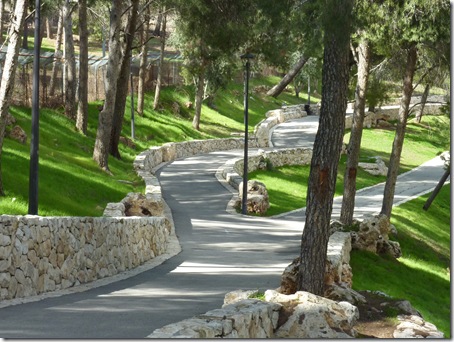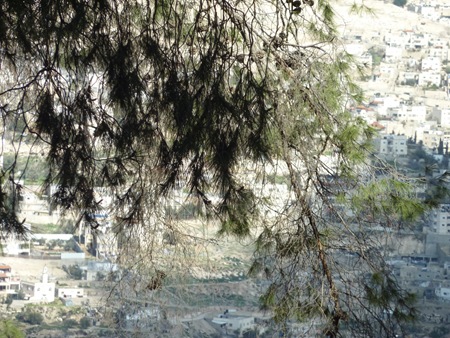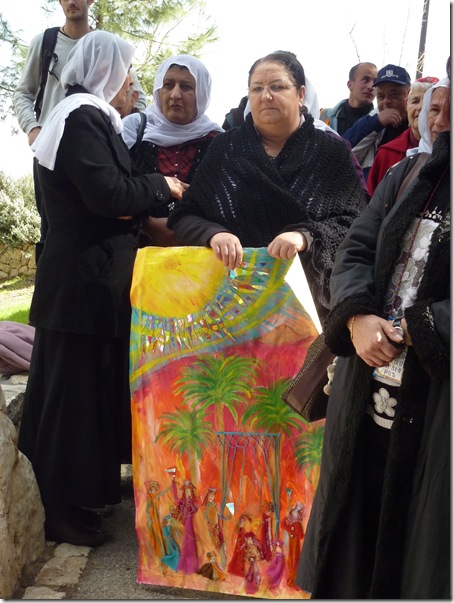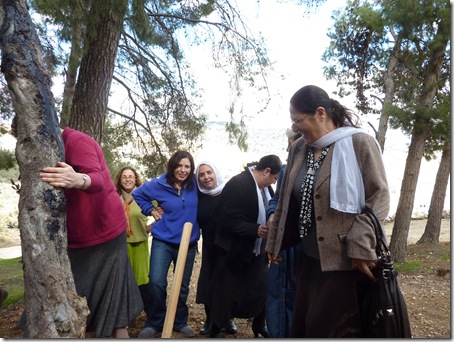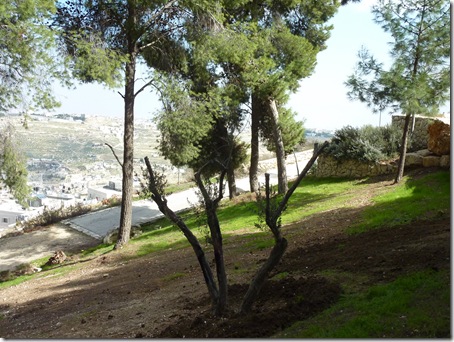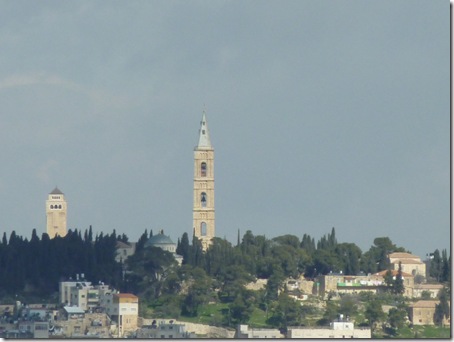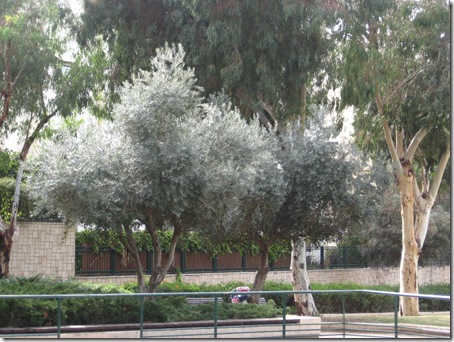In my book, Digging Deep: Unearthing Your Creative Roots Through Gardening, I discuss how gardening has the potential to empower individuals to be more creative in the garden…and in life. I recently experienced a beautiful example of this in the hills of Jerusalem.
My belief that nature can have a significant effect on working towards peace was reaffirmed when I attended a tree planting ceremony in Jerusalem. Sponsored by TRUST WIN, The Women’s Interfaith Network, it was honoring the memories of Richard and Rhoda Goldman, the benefactors of The Goldman Promenade, (where we convened) and Lawrence Halprin, the renowned landscape architect who designed the walkway. Together these two Bay Area residents turned a Jerusalem battlefield into a one 1/2 mile ‘peace park’ promenade linking East and West Jerusalem. It’s a place where families of all faiths feel free to come together to enjoy its natural beauty.
According to the New Testament, this was the Hill of Evil Counsel, where 2,000 years ago Judas Iscariot betrayed Jesus for 30 pieces of silver on the eve of the crucifixion. More recently, it was where the Six Day War erupted in Jerusalem in 1967. The Goldman Promenade was built across Government Hill Ridge, on a mountainside in Southern Jerusalem that was considered to be a no-man’s land between Jordan and Israel from 1948 to 1967.
As an Interfaith Minister, I believe strongly in the necessity of interfaith dialogue and community; so on a cold, windy morning after a week of almost non-stop rain, I jumped a bus to Jerusalem from Tel Aviv. Although I’m familiar with much of Jerusalem, as the cab wove its way from one part of the city to another with which I was unfamiliar abruptly coming to a halt at the entrance of the promenade, I sensed that I was entering an unknown sacred place.
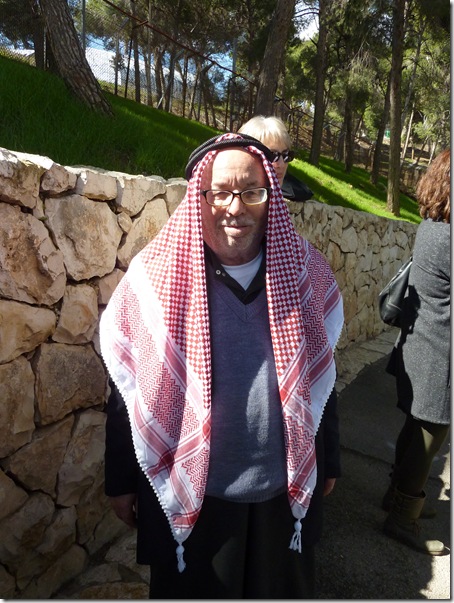
When I walked over to the already convened group, I was greeted by people from all walks of life and religions. With their open faces, filled with the knowledge that anything is possible when faith and acceptance and appreciation of diversity is present, I took in the beauty of the individuals and the magnificence of the trees draping over us, framing what can only be described as an awesome view.
When it was time to plant the trees, the women automatically took turns digging the soil to make a new home for these fledgling trees. No words were necessary; our purpose and kinship said more than any words could.
As the ceremony came to a close, I looked at all of the faces (and souls) intertwined with nature; it was magical.
A bit of information on olive trees:
Olive trees are prolific in Israel. They can be seen every few blocks in urban and suburban areas but are most beautiful when planted as groves on rolling hills with deep green cypresses acting as backdrops.
 |
| Photo: Courtesy of Vered Hasharon Travel and Tours |
“Olive trees in the ancient world were extremely popular because of their rich produce of expensive olive oil. The olives on each tree were filled with oil, more than 50% of each olive. There was an abundance of olive trees in the land of Israel when the Hebrews entered the land, just as God had promised them. The land was thriving with olive trees and archaeology reveals that it was a center for oil in ancient times.
The olive tree was also valuable for its wood. Olive wood was strong and popular for carving.
The tree itself had a lifespan of hundreds of years, and the most productive years for oil were 40-50 years old. The branches spread out beautifully, and it was a symbol of peacefulness and reproduction.
It is interesting that after the great flood, Noah released a dove and it returned with an olive branch.” Bible-History.com

